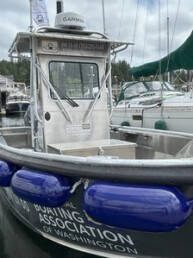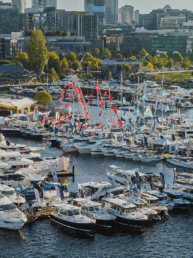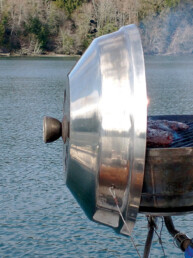There comes a time in many major rebuilds when thoughts of infidelity arise. You’ve just spent $600 on a spray foam insulation kit; emptied your boat’s interior of every last cushion, book, and can of baked beans; taped over the galley varnish and sprayed the hull. Three quarters of the way through the task, the curing agent stops dispensing, but it takes your horrified mind half a minute to unclench your hand on the trigger of the nozzle—and now 30 solid seconds of toxic molasses is oozing into your quarter berth. It will take your remaining patience to clean up the mess and will lend much validity to the recommendation your boyfriend gave earlier that you simply hire a professional to do it.
While toiling on hands and knees inside the cramped innards of your “labor of love”, you will have a flash of inspiration—what you really ought to be doing is rebuilding a dinghy. And you will walk away from your intimidating project to rebuild a Craigslist hull that you picked up for half the amount you spent on that insulation kit. As long as you eventually finish the bigger project, there’s no harm in temporarily diverting your attention to a smaller project that still gives the impression that you are working towards your greater cruising goals. Right?
We justify these lapses of loyalty by asserting the truth that every good cruising boat needs a good tender, but the search for a “good” tender can be elusive; in the world of boats there are so many compromises. When I first re-launched my sailboat—a classic, mid-century fiberglass sloop—I thought I was in love with my tender. It’s a fiberglass pram dinghy with wooden rub rails that was so solidly built it took the strength of two able bodied adults to pull it up onto a dock. That dinghy was so stiff that I could take a running jump into it without fear of falling overboard.
Ironically, my cruising boat was rather tender when it was first launched—due to the extensive refit, the ballast ratio had changed dramatically—and now the boat seemed to heel over if you leaned in to pass the salt at dinner. There was no possibility of carrying my hefty dinghy on the bow or in the non-existent davits, so I always towed it. One memorable day I was unwisely sailing during a gale warning. Each time I ran down the face of a wave, I would glance anxiously over my shoulder to watch my dinghy come racing after me, hoping that when it overtook me it would do so either to port or starboard of my sailboat’s transom.
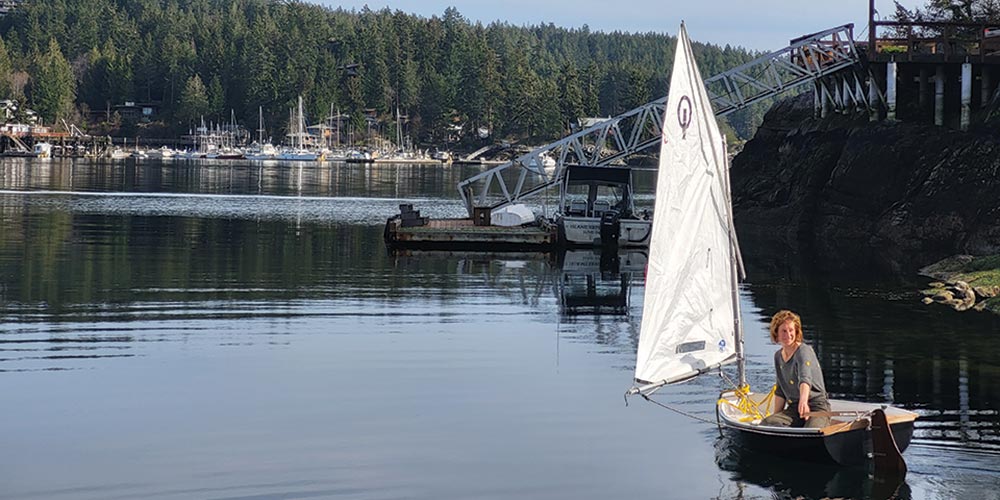
My experience of that dinghy as a battering ram motivated my decision to acquire a tender that would be small and light enough to go on the bow. Most cruisers choose inflatables for their performance and practicality, but I love rowing and dislike motors. So I kept a lookout for a small, light, used rowboat and, after a few weeks, saw a posting. I intended to merely repaint it black and white to match my sailboat; but my boyfriend, Trevor, wanted to start a dinghy racing club on Friday evenings in Finn Bay, and suggested my new tender could be refitted as a sailing dinghy. This would involve fiberglassing a slot for a dagger board and a sleeve for a mast; making a daggerboard, tiller and rudder; and creating buoyancy so that the dinghy wouldn’t sink if it flipped.
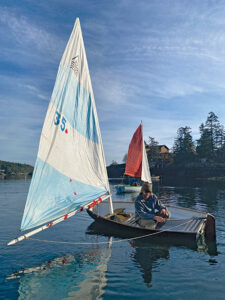
“That seems like an awful lot of extra work,” I protested feebly, thinking of all the unfinished business I still had with my Pearson Triton. Trevor, who had just finished re-sheathing a customer’s 32-foot boat in plywood and epoxy, and would begin fairing it next, cheerfully declared that he would refit my dinghy for me. His customer, an affable longtime friend, had already agreed to fund the building of a sailing dinghy in concurrence with the rebuild of his sloop. Four dinghies: the customer’s, Trevor’s, and my new and old dinghies would become the fleet for our Friday night race club.
Maybe it was a case of a big project needing a big distraction, but in the end I got behind the palate-cleansing side project with enthusiasm and sewed a new sail for Trevor’s dinghy—a roached-out, tanbark marconi that matches the tanbark sails on his ketch. The customer’s dinghy is a Sabot hull and an Opti rig, with a seat that runs fore and aft and is painted a bright orange—as unique and cheerful-looking as his sloop. And my little rowboat has an Opti rig and is decked out with beautiful wood accents, a callback to my cruising sailboat. My old pram dinghy is the ugly duckling of the bunch that we threw together on the cheap with duct tape and driftwood spars.
Although the dinghy rebuilds technically diverted us from our “real” work, the dinghies gave us a chance to continue sailing even when our boats were on land, mid-rebuild. It strengthened our resolve to keep sanding through the sweat of a hot summer day knowing our dinghies were tied up at the dock a short distance away. Even in the lightest winds, or when our main boats are in states of disrepair, we can still go sailing together at “No-Class” Friday Night Dinghy Race Club.

One memorable evening last summer, a refreshing breeze beckoned us down the boatyard hill to the dock, where we quickly rigged our dinghies and set an ambitious course for that Friday’s “race.” We sailed farther away from the dock than we ever had before, trying to circle a prawn trap. Then the wind died. We bobbed around for half an hour or so, trying to catch a non-existent breeze, and then trying to catch our friend’s attention as he motored along trolling for salmon, but had no luck on either account. Eventually we started to rock our way home, using kinetics and the gravitational teetering of the mast to generate our own small bursts of wind. It looked like it was going to be a long, tippy trip home, but then one large swoosh of real wind blew past us, and we rode the sudden, isolated gust all the way back to the dock.
Although my new tender is adorable and happily fits on my foredeck, I sometimes find myself missing my old rowboat when I’m out cruising. It was so sturdy and spacious, and those wood rub rails could really take a beating! And I know that our friend had some regrets about the fore-aft running seat he requested to be built for his Sabot. But in the boating world, every vessel is naturally a compromise, and for the time being, I’m very happy with my little dinghy.
After all, a boat owner’s tender sends a message. You sense that a yachter is rich when their tender is a helicopter; you see that your friend is at his anchored-out ketch when his dinghy is tied astern; and you can guess that Catalina guy is a greenhorn because he tows a canoe. I’d like to think that when people see our dinghies they see a glimpse of who we are and how much we love boats.
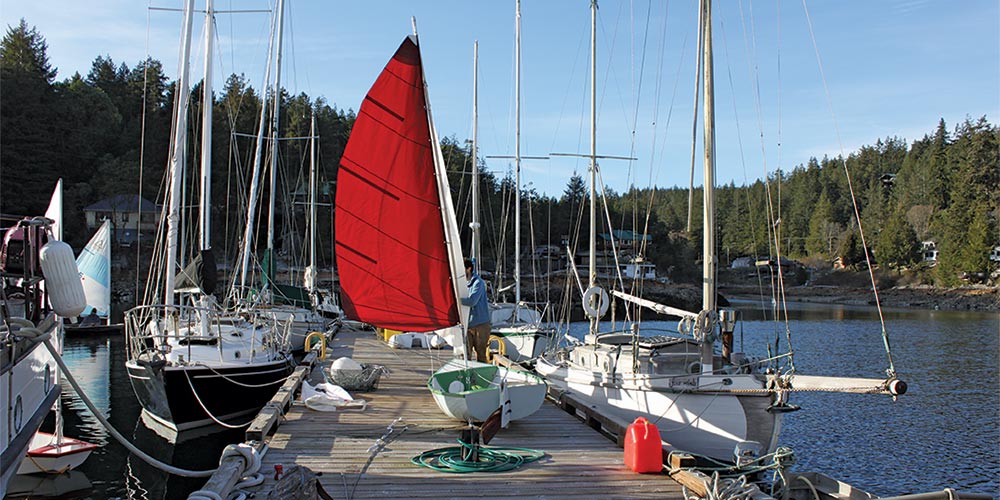
Emma Biron lives in Pender Harbour, B.C., and can often be seen sailing her Pearson Triton 28 around the harbor and beyond. In addition to sailing, she loves reading, writing, refits, and rowing.
Emma Biron
Emma Biron lives in Pender Harbour, BC, and can often be seen sailing her Pearson Triton 28 around the harbour and beyond. In addition to sailing, she also loves reading, writing, refits, and rowing.

